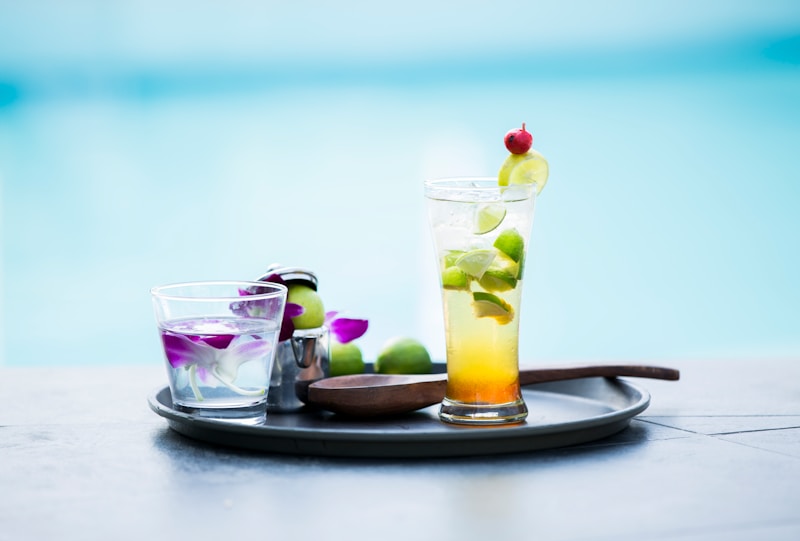Questions and Answers
What is the minimum alcohol content required by the European Union for vodka?
37.5%
Which country's nobility was granted a monopoly on producing and selling vodka in their territories in the mid-17th century?
Poland
What is the name of the old Absolut Rent Brännvin created in 1879, which was reused for the launch of Absolut Vodka in 1979?
Rent Brännvin
Which of the following is not a base used for making vodka?
Signup and view all the answers
What is the name of the vodka that is made from fermented rye and flavored with bison grass, which has been produced in Poland for centuries?
Signup and view all the answers
What is the maximum amount of sugar that vodka can contain according to the Code of Federal Regulations?
Signup and view all the answers
What is the name of the Swedish distilled beverage that was called 'burn-wine' instead of vodka until the 1950s?
Signup and view all the answers
What is the primary reason why vodka is less likely than other spirits to produce undesirable after-effects of heavy consumption?
Signup and view all the answers
What is the name of the black-market or 'bathtub' vodka that is widespread in some countries?
Signup and view all the answers
Study Notes
The History and Characteristics of Vodka
-
Vodka is a clear distilled alcoholic beverage composed mainly of water and ethanol with traces of impurities and flavourings.
-
It originated in Poland, Russia, and Sweden with different varieties using fermented cereal grains, potatoes, corn, sugar cane, fruits, honey, and maple sap as the base.
-
Standard vodkas have been 40% alcohol by volume (ABV) since the 1890s, and the European Union requires a minimum alcohol content of 37.5%, while the United States requires a minimum of 40%.
-
Vodka is typically drunk "neat," but it is also used in cocktails and mixed drinks such as the vodka martini, Cosmopolitan, and Bloody Mary.
-
The name "vodka" is a diminutive form of the Slavic word voda (water), interpreted as "little water."
-
The first written mention of the word "wódka" was in 1405 from Akta Grodzkie recorder of deeds in Poland, where it referred to chemical compounds such as medicines and cosmetics' cleansers.
-
In Russia, aqua vitae was brought by Genoese ambassadors in 1386, and the first written usage of the word "vodka" in its modern meaning is dated by the decree of Empress Elizabeth of 8 June 1751.
-
In Sweden, vodka was not used as a designation for Swedish distilled beverages until the 1950s, which were instead called brännvin ("burn-wine").
-
The production of vodka began in the mid-15th century, with varied local traditions emerging throughout Europe, and early spirits were used mostly as medicines.
-
Some notable Polish vodka blends go back centuries, including Żubrówka, Goldwasser, and aged Starka vodka.
-
The szlachta (nobility of Poland) were granted a monopoly on producing and selling vodka in their territories in the mid-17th century, and vodka production on a much larger scale began in Poland at the end of the 16th century.
-
The taxes on vodka became a key element of government finances in Tsarist Russia, providing at times up to 40% of state revenue, and by 1911, vodka comprised 89% of all alcohol consumed in Russia.
-
Vodka production was taken over by Poland's Marxist–Leninist government after World War II, and many distilleries were privatized following the abolition of single-party rule in Poland.Key Facts About Vodka
-
Absolut Vodka was launched in 1979, reusing the name of the old Absolut Rent Brännvin created in 1879.
-
Vodka is produced from grains such as sorghum, corn, rye, or wheat.
-
Most vodka is diluted with water before bottling.
-
Filtering is sometimes done in the still during distillation and afterward, where the distilled vodka is filtered through activated charcoal and other media to absorb trace amounts of substances that alter or impart off-flavors to the vodka.
-
Vodka flavoring comes from a post-distillation infusion of flavors.
-
Vodka is less likely than other spirits to produce the undesirable after-effects of heavy consumption because of its low level of fusel oils and congeners.
-
Several 'artisanal vodka' or even 'ultra-premium vodka' brands have appeared since the year 2000.
-
European Union regulation defines vodka as only spirits made from grain or potatoes.
-
Under Canadian regulations, vodka is a potable alcoholic distillate obtained from potatoes, cereal grain, or any other material of agricultural origin fermented by the action of yeast or a mixture of yeast and other micro-organisms.
-
As of 2020, vodka can contain up to two grams per liter of sugar and up to one gram per liter of citric acid according to the Code of Federal Regulations.
-
In summer 2013, American LGBT rights activists targeted Russian vodka brands for boycott over Russia's anti-gay policies.
-
In some countries, black-market or "bathtub" vodka is widespread because it can be produced easily and avoids taxation.
Studying That Suits You
Use AI to generate personalized quizzes and flashcards to suit your learning preferences.
Description
Think you know everything there is to know about vodka? Test your knowledge with this quiz on the history and characteristics of this popular distilled beverage. From its origins in Poland, Russia, and Sweden to its use in cocktails and mixed drinks, this quiz covers all the essential aspects of vodka. Learn about the different varieties of vodka, its production process, and regulations on its composition. Take the quiz and see how much you really know about this "little water"!



